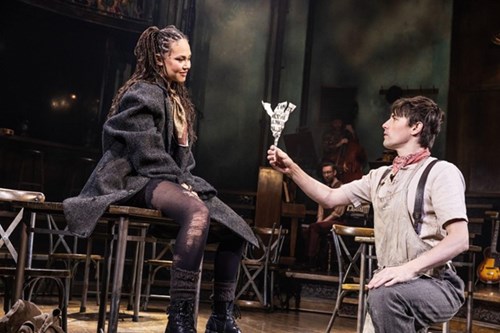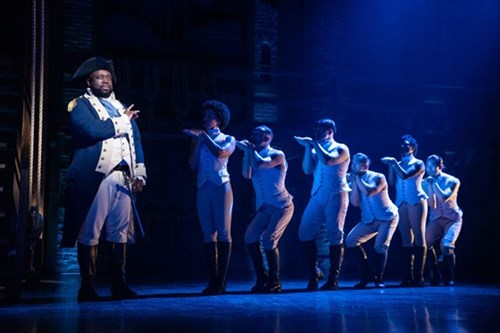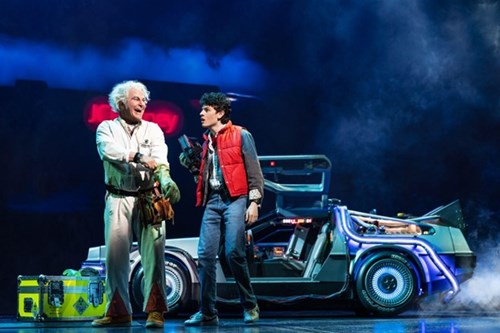
Welcome to the dazzling world of theatre, where the neon lights of Broadway fuse seamlessly with the classical charm of London's West End. Both Broadway and the West End are renowned for their high-quality productions and significant cultural contributions, each holding a prestigious standing within the global theatre industry.
Broadway, situated in the heart of New York City, is the epitome of American theatre, known for its grandeur, innovation, and commercial viability. Across the pond, London's West End, with its deep historical roots, is celebrated for its rich tradition and diverse repertoire.
As a theatre enthusiast, understanding the differences and similarities between these two theatrical giants is vital. It not only broadens your perspective but also enriches your appreciation for the art form. This comparative analysis will help you comprehend the unique cultural nuances, production values, and stylistic approaches that define and distinguish Broadway and West End, making your theatre experience more fulfilling and immersive. Stay tuned as we journey from the glitz of Times Square to the elegance of Leicester Square, comparing theatrical styles across the pond.
Broadway's origin dates back to the mid-18th century, but it was in the 1940s that it began to truly flourish. This golden era saw the birth of musical theatre, with show-stopping productions like Oklahoma! catapulting Broadway to international fame. Broadway's evolution has been deeply influenced by American societal changes, with productions often reflecting the nation's mood and zeitgeist of the time.
On the other hand, the West End's history is steeped in tradition, stemming from the late 16th century when the first permanent public playhouse, "The Theatre," was established. Over centuries, the West End has evolved, embracing different genres from Shakespearean classics to modern musicals while maintaining its quintessential British charm.
Significant historical events have shaped both Broadway and the West End. The Great Depression and World War II led to a decline in Broadway productions, but it bounced back with the post-war economic boom, introducing more diverse and thought-provoking plays. Meanwhile, the West End persevered through the London Blitz, keeping the British spirit alive with morale-boosting performances. These historical influences have created two distinct, yet equally compelling theatrical styles.
Broadway and the West End each have their unique practical differences that contribute to the overall theatre experience. Broadway audiences are known for their infectious enthusiasm, often leading to standing ovations, while West End audiences typically display a more reserved form of appreciation. Another notable difference lies in the distribution of Playbills and Programmes. In Broadway theatres, audience members receive free Playbills, providing information about the cast and crew. Conversely, West End theatres offer Programmes for a small fee, containing not only cast details but also extensive background information about the play.
Moreover, the type of productions varies between the two. Although both Broadway and the West End are renowned for their musicals, the West End features a higher percentage of non-musical plays, reflecting its deep-rooted tradition in drama and literature. Finally, the seating plans differ, with Broadway theatres often having a larger seating capacity and more varied ticket prices, while West End theatres are typically smaller, with a more uniform pricing structure. These practical differences, although subtle, significantly influence the theatrical styles and the audiences' experiences on either side of the Atlantic.

Broadway and the West End not only provide entertainment but also serve as cultural mirrors, reflecting the societal values, trends, and issues of their respective countries. Broadway productions often embody the American spirit and culture, featuring themes of individualism, optimism, and the pursuit of the 'American Dream.' For instance, the groundbreaking musical Hamilton portrays an immigrant's journey to success, reflecting America's melting pot of cultures and the nation's belief in upward mobility.
On the other hand, West End productions often showcase British wit, class dynamics, and historical narratives, reflecting the nation's cultural heritage and societal structure. A case in point is the play The History Boys, which delves into the British education system and class distinctions, providing a profound commentary on British society.
Both Broadway and the West End have a history of addressing societal issues and trends through their productions. Broadway's Rent and Dear Evan Hansen tackled themes of the HIV/AIDS epidemic and mental health, respectively, encouraging societal conversations. Similarly, the West End's Everybody's Talking About Jamie and My Name is Lucy Barton explored LGBTQ+ issues and poverty, respectively, reflecting British society's evolving discourse.
Recently, many of the shows that have originally premiered at London's West End have become local hits in NYC. One such example is Hadestown. With its breathtaking music and captivating storytelling, this musical has quickly become a beloved favorite among theatregoers on both sides of the Atlantic. Another West End sensation, SIX, a revolutionary pop-concert style musical about the six wives of Henry VIII, has taken Broadway by storm with its infectious energy and empowering message. Lastly, the much-anticipated musical adaptation of the iconic film Back to the Future had also made its premiere in the West End before making its way to Broadway.
When shows transfer across the pond, they are often adapted to suit the culture of the new audience. The scripts are often slightly modified to ensure that the narrative resonated with overseas audiences; and often, some of the cast members are replaced. These cultural contexts and adaptations are not just mere nuances; they are what give Broadway and the West End their unique identities, and deepen the universal appeal of theatre.

In conclusion, Broadway and the West End, while both celebrated for their superb theatrical performances, each possesses their unique characteristics shaped by their historical background, practical differences, and cultural contexts. Broadway, with its grandeur, infectious audience enthusiasm, and focus on American themes, offers a theatre experience that is as vibrant and diverse as the city it calls home. On the other hand, the West End, with its reserved audience appreciation, emphasis on non-musical plays, and reflection of British societal structures, offers a theatre experience that is as rich and nuanced as the centuries-old tradition it upholds.
These differences are not merely superficial; they shape the unique identities of both Broadway and the West End, adding depth, diversity, and global relevance to the world of theatre. They allow audiences to experience a variety of perspectives and narratives, enhancing their understanding of different cultures and societal contexts.
Looking ahead, there is immense potential for future exchange and collaboration between Broadway and the West End. Such collaborations could lead to the creation of innovative productions that blend the best elements of both theatrical styles. As the world becomes increasingly interconnected, these exchanges could also foster a deeper mutual understanding and appreciation between American and British theatre communities. Ultimately, whether you find yourself in the heart of Times Square or the elegance of Leicester Square, the thrilling experience of live theatre is a universal language that transcends geographical boundaries. Here's to the magic of Broadway and the West End, may they continue to inspire, entertain, and challenge us for generations to come.

